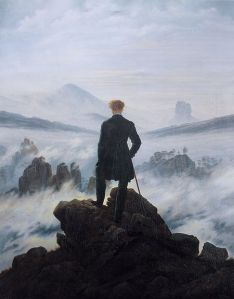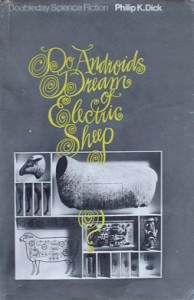 My main, desktop computer died on Saturday. It’s been limping along for a while. We had into the shop about six months ago, and should have known then it was terminal. The thing is, while I love Sturm und Drang in my literature, I prefer my electronic life to be stress-free.
My main, desktop computer died on Saturday. It’s been limping along for a while. We had into the shop about six months ago, and should have known then it was terminal. The thing is, while I love Sturm und Drang in my literature, I prefer my electronic life to be stress-free.
Limping along on my ancient, half-functional laptop, I can get by well enough to write the odd blogpost or work on my own work. But the screen is too small for me to use to edit for a client. Also, I can’t do any work requiring Photoshop, as that program is on my dead dinosaur.
I have my headphones on and the laptop strategically positioned, so it blocks the 50-inch technological disaster that is our TV and which seems to take up an entire wall. It also needs replacing as a series of vertical lines obscures the view on part of the screen but I doubt that will happen this year–TV is not that important. Music is mostly my form of entertainment.
Greg’s laptop is older than this one, although he is keeping it alive. All our technology is older than dirt. So, after I finish writing this blogpost, we are going shopping and two new machines will come to our house.

Caspar David Friedrich, Wanderer Above the Sea of Fog, 1818 PD|100 via Wikimedia Commons
Let’s talk about Sturm und Drang. The English translation is literally, Storm and stress.
Google defines it as: a literary and artistic movement in Germany in the late 18th century, influenced by Jean-Jacques Rousseau and characterized by the expression of emotional unrest and a rejection of neoclassical literary norms.
What does this mean in simpler terms?
Sturm und Drang as a literary form evolved during the time of the American Revolutionary War, which a period of global unrest and great hardship, especially in Europe. The main feature is the expression of high emotions, strong reactions to events, and often, rebellion against rationalism. It is characterized by violent individualism and complex emotions. Literature and music written in this style were aimed at shocking the audience and infusing them with extremes of emotion.
Classical literature in this style began in 1772 with “Prometheus,” a poem by Johann Wolfgang von Goethe, in which the character of the mythic Prometheus addresses God (as Zeus) in misotheistic accusation and defiance. Misotheism is the hatred of God, or the Gods, in literature described as stemming from a moment in a person’s life where one feels the gods have abused and abandoned him. Misotheism requires a firm belief in a God or Gods.
Again, Wikipedia tells us this: Prometheus is the creative and rebellious spirit which, rejected by God, angrily defies him and asserts itself; Ganymede is the boyish self which is adored and seduced by God. One is the lone defiant, the other the yielding acolyte. As the humanist poet, Goethe presents both identities as aspects or forms of the human condition.
Modern genre and indie literature using this style can be found as an underlying trope in Cyberpunk.
Wikipedia defines Cyberpunk as: a subgenre of science fiction in a future setting that tends to focus on the society of the proverbial “high tech low life“[1][2] featuring advanced technological and scientific achievements, such as information technology and cybernetics, juxtaposed with a degree of breakdown or radical change in the social order.[3]
 It is exemplified by post-industrial dystopias that tend to feature wide divisions in the social order and extreme chaos in society. Protagonists acquire and make use of technology in ways never anticipated by its original inventors (“the street finds its own uses for things”). Much of the genre’s atmosphere is heavily film noir, and employs techniques and style reminiscent of detective fiction.
It is exemplified by post-industrial dystopias that tend to feature wide divisions in the social order and extreme chaos in society. Protagonists acquire and make use of technology in ways never anticipated by its original inventors (“the street finds its own uses for things”). Much of the genre’s atmosphere is heavily film noir, and employs techniques and style reminiscent of detective fiction.
The difference between classical Sturm und Drang and modern Cyberpunk is Technology and Industry are the Gods whose knowledge the mortals desire, and whom they seek to replace. All aspects of Sturm und Drang can be found in Cyberpunk.
Cyberpunk began as a niche rebellion by authors like Phillip K. Dick, and is now mainstreamed and growing in popularity.
Authors writing in the early days of speculative fiction were Indies who were finding success getting short stories published in popular sci-fi magazines, and who were fortunate enough to have some farsighted editors take chances with publishing their longer work. They formed publishing companies and became giants. That opportunity will always be out there.
Indie authors have a great deal of latitude in their choice of what to write, as we can write and publish edgy work that would be deemed too chancy by traditional publishers. Authors always engage in artistic rebellion, and society always appreciates it—years afterward.
And tonight, I will continue my artistic rebellion while getting my new computing thing, whatever it shall be, up and running.








When all else fails, Sturm und Drang shall keep me alive!
LikeLiked by 1 person
Ja, Herr Professor!
LikeLike